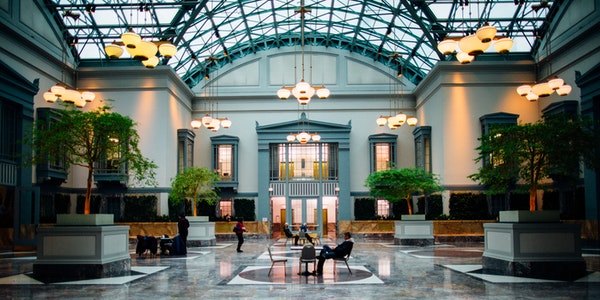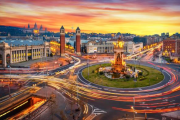In today’s comprehensive construction of a well-off society, with the continuous improvement of living standards, people’s awareness of lighting has been further enhanced.
Modern electric lighting is not only related to the principles of electricity and optics, but also related to the knowledge of architecture, physiology and hygiene. We must consider all aspects in order to get satisfactory results.
Modern architecture should not only pay attention to the constituent elements of indoor space, but also the aesthetic effect of lighting on the indoor environment, as well as the psychological effect resulting from it. Therefore, taking practical measures and earnestly doing a good job in building indoor lighting is an important link for people to pursue the perfect unity of artistic theme and visual comfort.
The Influence of Light on the Indoor Environment
Light has a great influence on the indoor environment. Excessive changes in brightness can easily cause visual fatigue and even glare. However, an excessively uniform brightness distribution will reduce the clarity of the perceived object and make the indoor atmosphere dull. Therefore, in atmosphere-based lighting occasions, it is necessary to change the brightness to create a pleasant atmosphere.
The visual impression of indoor lighting comes from the distribution of light and shadow in the lighting space. Different architectural compositions and diversified architectural styles will inevitably have different influences on the choice of luminous flux distribution in the lighting space.
If the lighting arrangement method is consistent with the building’s indoor space form, it can highlight the depth and level of the building space and deepen the feeling of the building space. For example, in the lighting design of a large conference hall, sufficient and uniform illumination should be considered, and shadows and glare should be avoided as much as possible.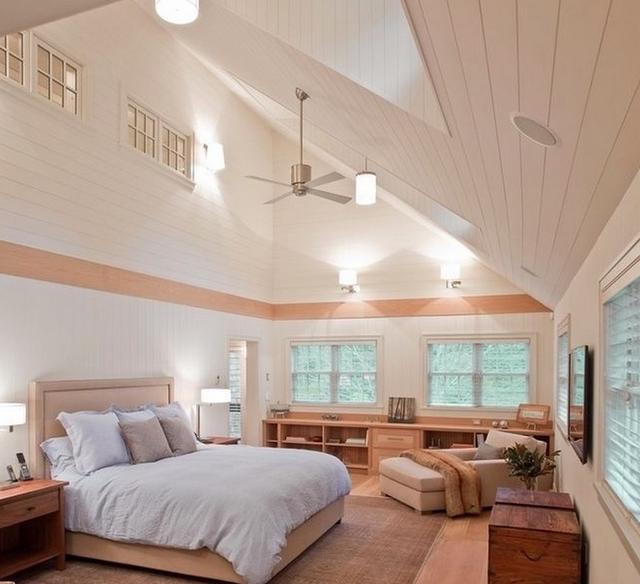
Transparent and High Ceiling Buildings
If the form of the building is a translucent diffusing material as the suspended ceiling, lights can be installed in the suspended ceiling to form a large-area luminous ceiling with uniform brightness. The lighting effect not only simulates the environment of day and night lighting, but also forms diffuse lighting with soft light, which can fully express the sense of volume of the architectural space.
When some tall halls are decorated with bas-relief and patterned corners, it is difficult for diffuse lighting to fully show the shape and three-dimensional effect of these decorations. At this time, the light-emitting area of part of the ceiling can be appropriately reduced, and the distribution of indoor hue can be controlled so as to form changes in brightness and chromaticity in the field of view. Local lighting devices such as wall lamps, chandeliers, table lamps can also be added to increase the level of light to render the indoor atmosphere.
Restaurant Lighting Essentials
The lighting of restaurants, cafes and other indoor spaces should take into account the impact on people’s psychological factors. High brightness can make people excited and active, and low brightness can make people relax and reverie. Therefore, indoor lighting brightness and its distribution should be determined by its category.
The illumination of luxury restaurants and cafes should consider the illuminance to be moderate, the light should be soft and form a uniform diffusion. The indoor lighting must be organically combined with the building structure, so that the entire space has a good lighting visual environment.
The lighting of the cafeteria or fast food restaurant should be considered above the table and have a higher brightness. Other parts of the lighting should be soft and concealed, so that people’s attention can be focused on the table, to achieve the purpose of rapid service and rapid circulation.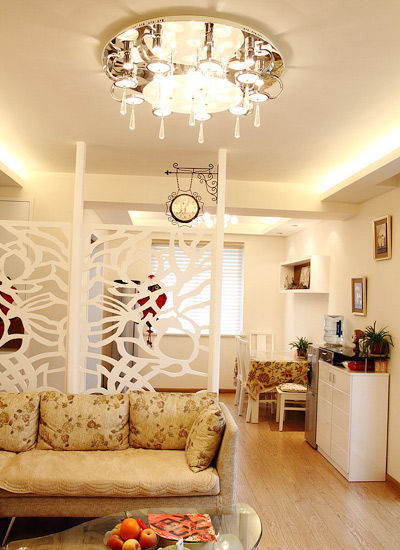
If there is a light-transmitting wall panel in the restaurant, a light can be installed between it and the building structure to form a light-emitting wall panel. This is a good and suitable background for the near vision, and for the entire room, it can form a pleasing perspective, integrate the indoor and outdoor environments, and receive the effect of expanding the indoor space.
Key Points of Interior Lighting Design
In interior lighting design, while considering the use of functions, different artificial lighting methods, changes in lighting brightness, and distribution of light and shadow should be used to beautify the environment, enhance the atmosphere, and enhance the sense of space.
The main practices and experiences are:
(1) According to different activities or work needs, the contrast should be reasonably configured to create a good visual physiological environment
(2) Avoid glare, glare, and brightness ratios that differ greatly, and prevent visual fatigue and bad visual psychological effects.
(3) Indoor lighting must reflect the outline of the indoor structure, the spatial hierarchy, and the three-dimensional sense of indoor furniture and decorations.
(4) Use light to transmit a special decorative style, show the surface texture of fabrics or building materials, and reflect the beauty of interior decoration and interior colors.
Lighting and Color Analysis
Different light sources have different light colors, resulting in different environmental atmosphere and environmental artistic effects. Red, orange, and yellow low color temperature light sources give people a sense of enthusiasm, warmth, excitement and dynamics.
Hotel and Residential Lighting
In the lobby of the hotel, a large area of low color temperature light source is used for lighting, which can render a warm, comfortable, warm and cordial atmosphere, and give guests a feeling of being at home.
The living room of the residence is a place where family members gather and share. The use of low color temperature light source lighting can make the living atmosphere of the living room more rich and warm. The blue, green, and purple high color temperature light sources can give people a sense of tranquility, coolness, elegance and peace, and are suitable for installation in hospital wards.
In indoor spaces such as reading, writing, and office, a large area of high color temperature light source lighting can be used to create a quiet and elegant environment to improve concentration and work efficiency.
The Role of Light Color
For stimulating spaces such as dance halls and bars, the arrangement is organically combined with high and low color temperature light sources, and the color brightness is dark and dark lighting. The color tone is strong and dynamic, using rotation changes and colorful lighting colors to render an unusually bold and confusing atmosphere.
Color can make people feel far and near. Low color temperature has a sense of reduction and proximity, and high color temperature has a sense of openness and far-reaching. When the indoor height is low, choosing a low color temperature light source will cause shrinkage and depression, creating an uncomfortable environment. The use of high color temperature light sources can form a feeling that the indoor space is enlarged, thereby making up for the lack of physical space to a certain extent.
It can be seen that when engaging in interior lighting design, attention should be paid to the space environmental conditions, and the color of the light source should be reasonably determined according to the functional requirements of the indoor space to obtain the best artistic effect that meets the functional requirements.
The Influence of Lamps on the Atmosphere
The reasonable arrangement of lamps and lanterns can make the illuminance on the working surface uniform, the light is directed appropriately, and there is no glare and shadow. The maintenance is convenient and safe, and can be neat, beautiful, and consistent with the building.
Use the change and distribution of light to create various visual environments to enhance the indoor space effect and atmosphere. The use of a large number of simple structure ceiling lamps or embedded point light source direct light lamps, together with the ceiling decoration of the room, form a complete architectural art pattern, which can produce a special style and deepen the sense of hierarchy, so that the indoor atmosphere is quiet and not noisy.
When the shape of the decorative wall lamp is in harmony with the interior decoration, it not only plays the role of auxiliary lighting, so that the wall can get beautiful light, but also plays a decorative role, reflecting the spaciousness of the room. The chandelier (flower lantern, crystal lamp) can create a magnificent atmosphere.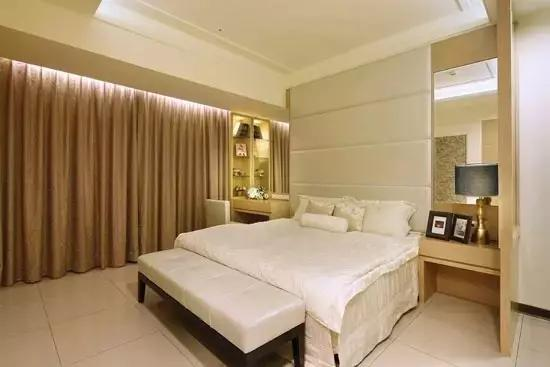
Civil Architectural Lighting Design Principles
In civil buildings, such as halls, shopping malls and other places, selective lighting should be adopted, and the beautiful decoration and environmental characteristics should be considered, and the light sources and lamps of various forms should be unevenly arranged.
Strengthen the illuminance in some areas and highlight visual effects to create a dazzling atmosphere. In the main hall of the hotel, sofas, tables, bonsai and various handicrafts are generally furnished, and large chandeliers can be used to highlight the luxurious and warm atmosphere. Or use down-cast lamps to form a quiet and elegant environment.
If the down-projection lamps and vertical lamps are used in combination, the main hall can be spacious and gorgeous. The main hall with high space and large area uses large crystal lamps as the main lighting, which can reflect the gorgeous atmosphere. In low spaces, down-shooting lights can be used as auxiliary lighting, which can give people a sense of elegance and lightness.
Installing decorative wall lamps on a large area of the wall can play an auxiliary lighting role and also have a good decorative effect. Combining different lamps and lanterns organically can express the theme together, highlighting the elegant, gorgeous and warm atmosphere of the main hall.
Therefore, it is necessary to select the shape and color of the lamps according to the different environments and uses of the indoor space, and arrange them reasonably. Utilizing the beautiful shape of lamps and the coordination of light and color, the indoor environment can have a certain specific atmosphere and artistic conception.
The Meaning of Indoor Lighting Art
Indoor lighting art not only directly affects the indoor environment atmosphere, but also affects people’s physiology and psychology. When designing indoor lighting, the shape and light distribution method of lighting fixtures should be determined according to the use function, visual effect and artistic concept of the indoor space environment.
The organic combination and correct use of the three can create an atmosphere and artistic conception that is in harmony with the indoor space environment. Fully reflect the style of architectural space, enhance the beauty of architectural art, so as to better meet people’s aesthetic requirements and visual psychological functions, and fully achieve the purpose of improving the level of indoor lighting art.
Indoor lighting is a major event in people’s daily life. According to the principle of electricity and lighting, for different forms of building space, combined with the economic conditions of the building owner, the lighting form, the color temperature of the light source, and the shape of the lamps should be appropriately selected to achieve the perfect unity of input and output, economic benefits and visual effects.

